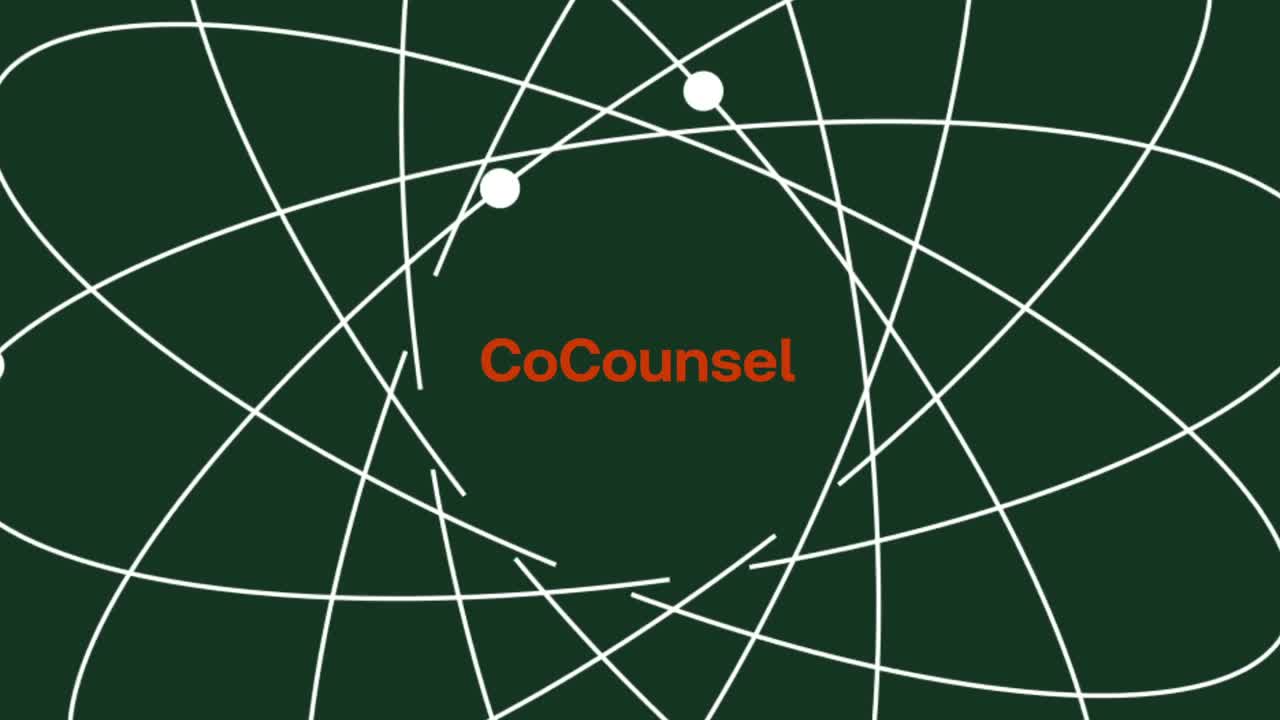
CoCounsel by Thomson Reuters: Complete Buyer's Guide
Enterprise-grade AI legal assistant delivering proven efficiency gains through deep Thomson Reuters ecosystem integration for large law firms.
CoCounsel by Thomson Reuters represents Thomson Reuters' flagship AI legal assistant built on OpenAI's GPT-4 foundation with extensive legal-specific fine-tuning. Through the 2023 acquisition of Casetext for $650 million, Thomson Reuters has positioned CoCounsel as an integrated component of its broader legal technology ecosystem rather than a standalone AI solution[52].
Market Position & Maturity
Market Standing
CoCounsel represents Thomson Reuters' strategic positioning as the dominant enterprise legal AI platform through its $650 million acquisition of Casetext in 2023, establishing the company as a major player in the rapidly growing legal AI market projected to reach $3.90B by 2030[4][52].
Company Maturity
Thomson Reuters' market maturity spans decades of legal technology leadership, with established relationships across the global legal industry through Westlaw, Practical Law, and comprehensive legal research platforms[46].
Industry Recognition
Industry recognition includes validation through extensive customer deployments and enterprise adoption patterns. Polsinelli's implementation across 1,200 attorneys with 70% associate adoption[54] and Century Communities' successful M&A due diligence processing of 87 land contracts[47] demonstrate real-world validation of CoCounsel's capabilities in demanding enterprise environments.
Strategic Partnerships
Strategic partnerships center on Thomson Reuters' established legal industry relationships rather than external technology alliances. This approach provides deep integration capabilities with Westlaw, Practical Law, and Microsoft Office[47][56].
Longevity Assessment
Long-term viability benefits from Thomson Reuters' financial stability and commitment to legal technology innovation, evidenced by the substantial $650 million Casetext acquisition[52].
Proof of Capabilities
Customer Evidence
Enterprise deployment validation demonstrates CoCounsel's proven capabilities across multiple large-scale implementations. Polsinelli's deployment across 1,200 attorneys achieved 70% associate adoption and 50% shareholder adoption after comprehensive pilot testing[54].
Quantified Outcomes
Quantified customer outcomes provide measurable evidence of CoCounsel's effectiveness. Century Communities successfully processed 87 land contracts during M&A due diligence[47]. Fisher Phillips reports dramatic time reductions from 5 hours to 5 minutes for routine legal analysis tasks[51].
Market Validation
Market validation through enterprise adoption spans 45+ large U.S. law firms including six Am Law 10 practices, reaching over 50,000 lawyers total[52].
Competitive Wins
Competitive wins emerge through Thomson Reuters ecosystem integration advantages. CoCounsel leverages existing Westlaw and Practical Law relationships to provide seamless workflow integration[52][46].
Reference Customers
Reference customer evidence includes publicly disclosed implementations across diverse practice areas. Century Communities' M&A due diligence success demonstrates capability in complex transaction environments, while Fisher Phillips' firm-wide deployment shows effectiveness in employment law practice[47][51].
AI Technology
CoCounsel's technical foundation combines OpenAI's GPT-4 with extensive legal-specific fine-tuning using Casetext's comprehensive legal databases, validated through rigorous testing by 400+ attorneys across elite firms[51][52].
Architecture
The platform's architecture leverages Thomson Reuters' decades of legal content curation, integrating Westlaw's vast case law repository and Practical Law's expert-authored guidance to create domain-specific AI capabilities that understand legal context and terminology[46][52].
Primary Competitors
Primary competitors include Harvey's custom model development approach, Spellbook's small firm accessibility, and LexisNexis partnerships with AI providers[52].
Competitive Advantages
Competitive advantages center on proven enterprise scalability with deployment across 45+ large U.S. law firms including six Am Law 10 practices, reaching over 50,000 lawyers total[52].
Market Positioning
Market positioning reflects Thomson Reuters' strategy of ecosystem integration rather than standalone AI tool competition[46][52].
Win/Loss Scenarios
Win scenarios favor organizations with established Thomson Reuters relationships, document-intensive practice areas, and enterprise-scale requirements[47][54]. Loss scenarios include organizations prioritizing vendor flexibility, custom model development, or cost optimization[52].
Key Features

Pros & Cons
Use Cases
Integrations
Featured In Articles
Comprehensive analysis of AI Legal ChatGPT Fine-Tuning for Legal/Law Firm AI Tools for Legal/Law Firm AI Tools professionals. Expert evaluation of features, pricing, and implementation.
How We Researched This Guide
About This Guide: This comprehensive analysis is based on extensive competitive intelligence and real-world implementation data from leading AI vendors. StayModern updates this guide quarterly to reflect market developments and vendor performance changes.
58+ verified sources per analysis including official documentation, customer reviews, analyst reports, and industry publications.
- • Vendor documentation & whitepapers
- • Customer testimonials & case studies
- • Third-party analyst assessments
- • Industry benchmarking reports
Standardized assessment framework across 8 key dimensions for objective comparison.
- • Technology capabilities & architecture
- • Market position & customer evidence
- • Implementation experience & support
- • Pricing value & competitive position
Research is refreshed every 90 days to capture market changes and new vendor capabilities.
- • New product releases & features
- • Market positioning changes
- • Customer feedback integration
- • Competitive landscape shifts
Every claim is source-linked with direct citations to original materials for verification.
- • Clickable citation links
- • Original source attribution
- • Date stamps for currency
- • Quality score validation
Analysis follows systematic research protocols with consistent evaluation frameworks.
- • Standardized assessment criteria
- • Multi-source verification process
- • Consistent evaluation methodology
- • Quality assurance protocols
Buyer-focused analysis with transparent methodology and factual accuracy commitment.
- • Objective comparative analysis
- • Transparent research methodology
- • Factual accuracy commitment
- • Continuous quality improvement
Quality Commitment: If you find any inaccuracies in our analysis on this page, please contact us at research@staymodern.ai. We're committed to maintaining the highest standards of research integrity and will investigate and correct any issues promptly.